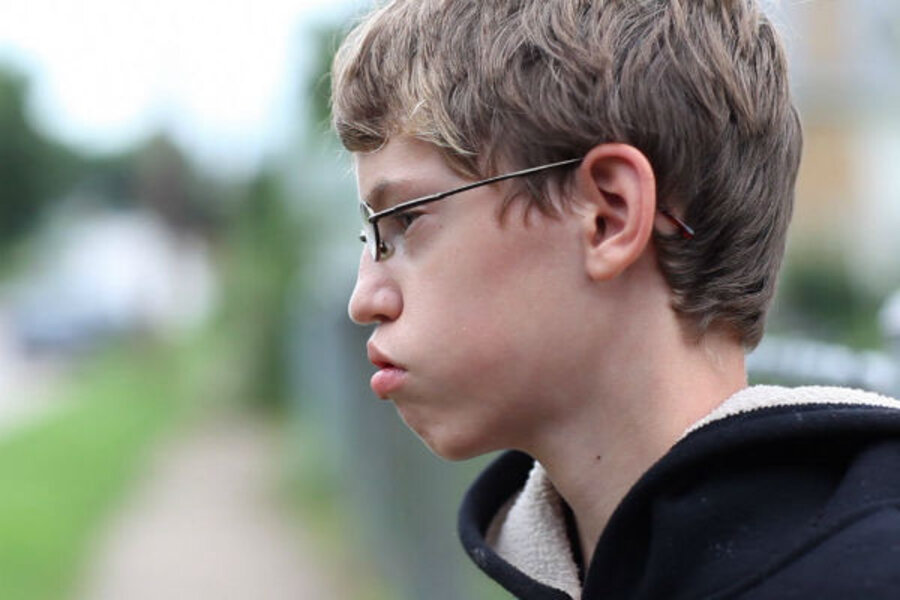A six-year-old bully? Really?
Ok, folks. I’m about to go on a bully rant here.
But first, to give you some context, check out this news tidbit coming out of Texas this morning:
A district attorney’s office is investigating a mom’s complaints that teachers at her 6-year-old’s San Antonio elementary school publicly labeled her son a bully, and then told the rest of the class to line up and hit him to “teach him a lesson.” The 24 other kids then proceeded to wallop little Aiden Neely, whose mom says he had been simply cutting in line.
He wasn’t physically hurt, mom Amy Neely said, but he certainly suffered emotional damage.
“My heart stopped, my stomach was in knots, I was in shock, I really was,” she told the local television station. “I just couldn’t believe a teacher would do that.”
Um, yeah.
Because... it’s crazy. (Even if I know a few teachers who wish they had thought of it first.)
Now, it would be easy for me to continue this post by writing about how bullying is bad, but how it’s also seriously misguided to teach kids that violence is the correct response to violence. Blah blah blah. (And that’s apparently the message Neely’s school is trying to send; it has apparently fired one of the teachers involved and put the other on administrative leave.)
But that conclusion only scratches the surface.
The deeper issue, I’d venture, is the “bully” phenomenon sweeping America.
And no, I don’t mean that bullying is sweeping America, invading the schoolyards and classrooms and cyber-lives of U.S. children. (Although that’s the sense you’d get if you follow, like we do, news about the social lives of kids.) I mean that the concept of the “bully,” as catch-all world to describe pint-sized boogeymen of every flavor, has gone viral.
It has gotten to the point, we’ve noticed, where any variety of childhood unkindness is labeled “bullying,” and stories about “bullies” are so common (and different from one another) that they have started to lose their meaning. Say “bully” and the word evokes emotion – omg, Mitt Romney might have been a bully in high school! Should he be president? – but few facts.
A month back, we ran a post by Paula Reed, an English teacher at Columbine High School, who suggested we might do well to explore the “shades” of bullying. Not all bullies are the same, she wrote. There are certainly cases of what she termed the “classic bully” – the mean predator who relentlessly and cruelly picks on the weakest kids in class. But there are also socially dominant kids who are popular and aggressive, she wrote, and “normal” kids who are trying to navigate the social land mines of growing up, and who sometimes act unkindly to their peers in a misguided attempt to protect themselves or increase their own popularity.
Is this nice? Nope. Is it bullying? Well... it certainly shouldn’t be treated the same as the relentless cruelty of the classic bully. Which is the problem with “no tolerance” anti-bullying policies being instituted in schools across the country.
This is also the problem with parents who label every act of meanness to their own children as bullying.
Bullying requires school, and potentially police, intervention. Other people need to do things to make it stop; parents and children give up the agency for mediation, resolution and simply learning how to deal with the reality that some people out there are jerks. Bullying, in its current cultural definition, has an innocent victim and a “bad” perpetrator. And, particularly troubling (and encouraged by pop culture interpretations and movies such as “Bully”), bullying often leads to victims either committing suicide or killing their classmates.
This is not a helpful message, people.
Now, I’m not saying it’s a bad thing that adults are more concerned about the way children treat each other. For too long we’ve had a “boys will be boys,” “girls will be girls” attitude about children’s meanness. Adults should take seriously their role to teach – and, more importantly, model – kindness.
But to get back to our Texas story: It’s crazy to be talking about a 6-year-old, no matter how obnoxious he may be, with the same labels as those used for Dharun Ravi, the Rutgers student who used a web camera to spy on his gay roommate, or the students who mercilessly picked on Massachusetts student Phoebe Prince, who hung herself after weeks of abuse.
Because it's this blending of terms, this obliteration of meaning behind the words, that makes vigilante justice on an elementary school student seem acceptable.







